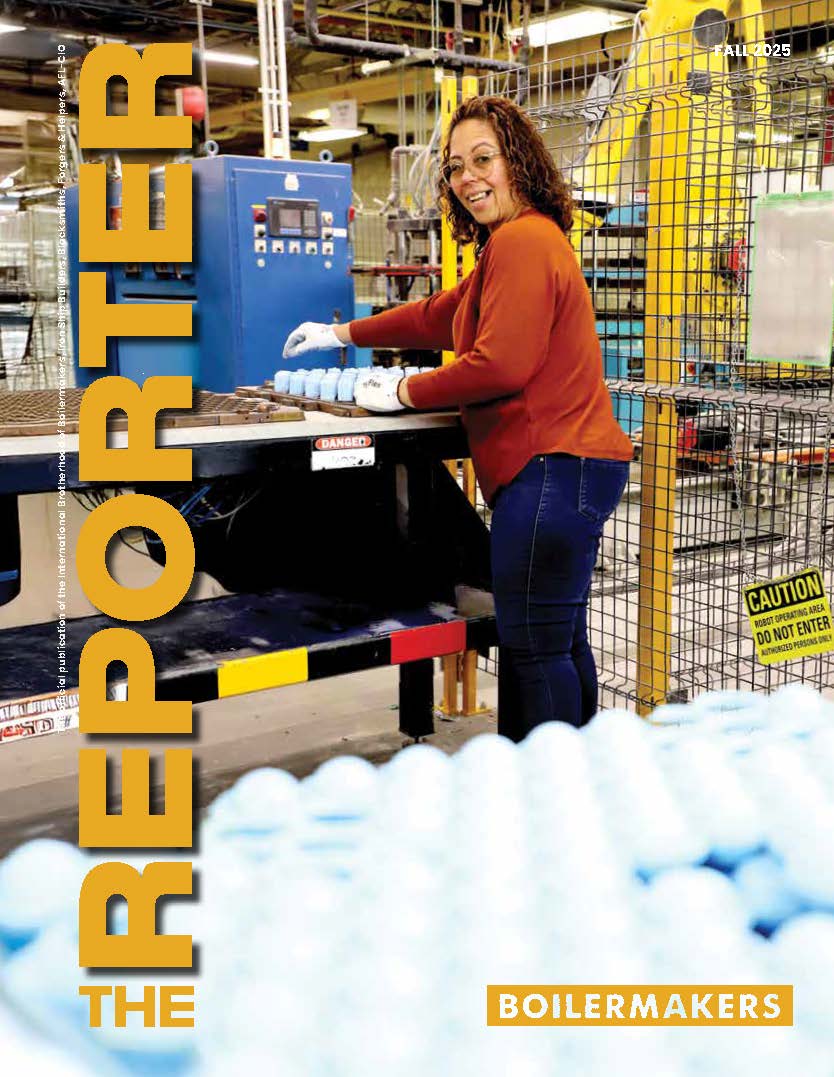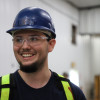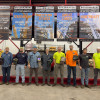“Trees take 400 million parts of CO2 that’s in the atmosphere and concentrate it 500,000 parts per million of carbon in the tree. I think that’s a pretty good head start if you’re trying to get CO2 out of the air.”
The United States Energy Association put the Boilermakers in the spotlight with innovator Ian MacGregor on April 4 to introduce a new clean hydrogen technology project during a briefing open to the public.
The Boilermakers union is a USEA member and was invited to submit a discussion topic for the briefing. Offered online and in-person, the event was the first in-person program offered by USEA since the pandemic began.
International Director of Climate Change Policy Solutions Cory Channon introduced MacGregor and outlined the Boilermakers’ commitment to advocating for common-sense climate change solutions, such as clean hydrogen and carbon capture, use and storage.
“Ian MacGregor has already completed some incredible work in carbon capture and hydrogen advancement through past projects,” Channon noted, pointing out MacGregor’s Sturgeon Refinery (now part of North West Refining) in Alberta—which Boilermakers built—and his work on the Alberta Carbon Trunk Line.
“The Sturgeon Refinery was the world’s first refinery designed to capture carbon dioxide process emissions from the outset, and it is also believed to be the largest blue hydrogen plant in the world.”
MacGregor outlined his plan to remove millions of tons of carbon from the atmosphere by powering facilities and communities with what he has coined Bright Green™ Hydrogen made using residual forestry waste fiber as feedstock. He gave an overview of how the process works, why it’s not just carbon-neutral but carbon net-negative and how his plans provide indigenous ownership and durable jobs in the transitioning energy market. (Read “Focus on solutions: Clean hydrogen and CCUS,” for details on MacGregor’s plans and process.)
“The goal is to remove one gigaton of CO2 from the atmosphere and make large quantities of clean hydrogen and ammonia,” MacGregor said. He is planning four hubs across Canada and the United States, located near existing carbon sequestration infrastructure and forest operations.
He stressed that using wood waste from existing forestry operations creates an efficient cycle for carbon dioxide reduction.
“Trees have been doing this for 250 million years. Trees take 400 million parts of CO2 that’s in the atmosphere and concentrate it 500,000 parts per million of carbon in the tree. I think that’s a pretty good head start if you’re trying to get CO2 out of the air.”
The Boilermakers union worked with MacGregor to produce a series of films explaining the process, which debuted at the event.
“Boilermakers have worked with Ian in his past projects, and we look forward to being a part of bringing his Bright Green Hydrogen to life,” said Channon.
To view the films and learn more about Hydrogen Naturally, Inc’s Bright Green Hydrogen, visit https://vimeo.com/showcase/10190971.







